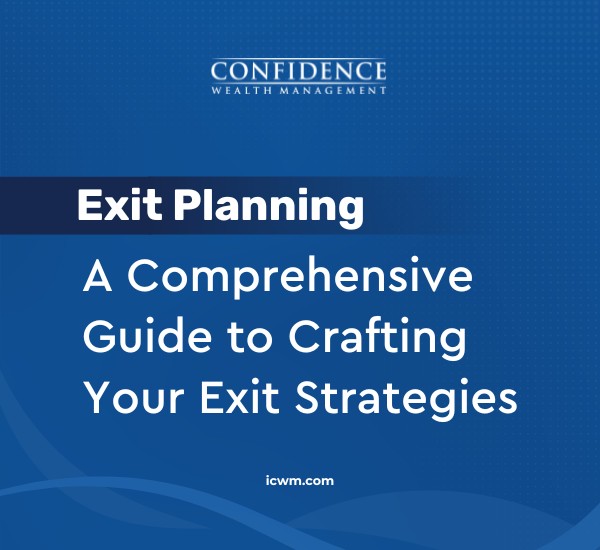Leaving the workforce to live off your savings is an adventure. It’s exciting and nerve-wracking all at once. If you want to take the plunge and enjoy the experience, you’re going to want a stalwart guide to help you prepare for and navigate through the ups and downs.
Retirement planning can be easy during the accumulation phase. Your plan can be as simple as “stash money in investment accounts, maximize returns.”
That’s because all that matters is what you end up with when you retire. Your returns might vary from year to year, or come from different sources, but none of that matters because it’s all a race to grow the nest egg as large as possible.
The bigger the number, the better. Simple.
Then the fateful day comes when you decide you’re going to crack that nest egg open and pull from the pile of goodies you’ve collected. You start withdrawing money.
Now the game has changed.
The goal is no longer to simply grow the account balance, but rather to provide enough current income to meet your spending needs and to allow the nest egg to diminish, as it naturally must, without letting it disappear.
Success isn’t measured by only a large number anymore, but by withdrawal rates and account values so you can ensure that your money is not in danger of running out.
This takes an entirely different mindset because there are new issues to consider when time, compounding, and conventional investment principles no longer work in your favor.
Here’s what to consider when you go from accumulating to taking a distribution from your nest egg.
Attitude Adjustment
There are many changes you’ll face after you start withdrawing from your nest egg. Here are the biggest ones to consider.
- Dollar-cost Averaging Works in Reverse
When you’re investing in volatile markets, it’s common wisdom to buy using a set dollar amount so you buy more shares when prices are down. But keep in mind that this works both ways.
When you are withdrawing fixed dollar amounts from a volatile portfolio, temporary dips can do serious damage because more shares must be liquidated to provide the same amount of cash.
- Compounding Also Works in Reverse
We tell our clients to buy early and for the long term. That’s because research shows that this strategy provides a great base for large compounding. The rule works a little differently when determining withdrawal rates: taking out too much too soon will diminish the impact of compounding on the remaining assets.
- The Sequence of Investment Returns Matters
When you’re accumulating, dips in value can be made up by a bull market or increased savings. What matters is the average total return.
But during the distribution phase, poor returns early on can cripple your portfolio and lead to you running out of money.
- Time is No Longer Your Friend
When you’re accumulating, the longer your time horizon the better. That’s because the longer you stay invested, the more your money is expected to grow.
When you’re taking money out, the opposite is true. The longer you expect to be withdrawing, the sooner you can expect to run out of money.
- Mistakes Can be Catastrophic
Early on when you’re accumulating, you can fix any mistake by adding money, revising the portfolio, working longer, etc. In retirement, money is coming out and no new money is going in so there is far less room for error.
With all this in mind, you want to learn some fundamental concepts to manage your nest egg well. In particular, pay attention to the dangers of volatility, excessive withdrawals in the early years, and a longer-than-expected withdrawal period.
These threats can undo a lifetime of diligent saving. Worst of all, they can rear their ugly head when it’s too late to do anything about it.
Income Planning
Plan your income ahead of time so you can get ahead of these potential problems. It requires careful number crunching and a strategy for getting your hands on cash.
Here are some popular retirement-income strategies:
- Live Off of Interest or Dividends
A classic strategy is to shift from a growth-oriented portfolio to an income-generating one. These might include bonds and dividend-paying stocks, making your income consist of the actual payments thrown off by the investments in your nest egg.
Any assets not needed for current income generation may be invested in equities for inflation protection and long-term growth.
- Setup a Withdrawal Plan
Another approach is to invest for the total return a lot like you did in the accumulation phase and set up a withdrawal plan starting at, say, four percent of the account balance.
Each subsequent withdrawal would be increased by the annual inflation rate. Under the so-called “four percent rule,” the assets are invested in a diversified portfolio of stocks and bonds.
- Draw From a Cash Bucket
Another strategy is to keep enough cash in a money-market fund to fund two years’ worth of expenses and invest the bulk of the portfolio for total return. As you empty the cash bucket, you liquidate enough long-term assets to fill it back up.
Where Are Your Assets?
Keep in mind: retirement-income strategies you use for taxable accounts won’t necessarily be appropriate for nontaxable accounts.
For example, if you want a tax-free income from a taxable account, you can buy municipal bonds. If you want a tax-free income from an IRA, you’ll have to convert it to a Roth, which means paying taxes on the account when you convert.
You might have lots of different accounts by the time you retire. Look at them as a whole for overall investment planning, and also individually to determine how you should withdraw from each one.
When Should You Sell?
Knowing when and how to liquidate your assets is key when you begin withdrawing. If you’re planning a major portfolio overhaul, you’ll need to consider the tax and investment implications of asset sales.
For taxable accounts, learn the tax basis of each holding. You’ll also need to know your overall tax situation in any year you propose a sale of assets, including previous loss carry-forwards, AMT status, the receipt of taxable retirement distributions, etc.
If you think you need to reorganize your investment portfolio to meet your goals, meet with your tax advisor and map out a plan for the orderly liquidation of assets.
Keep in mind that this could take years.
Periodic asset sales will also be necessary during your retirement years, especially if you are using the cash bucket strategy. Each time you liquidate you’ll need to balance tax and investment considerations so you can time these asset sales for maximum benefit.
What is the Impact of IRA Withdrawals?
If part of your strategy involves withdrawing from a regular IRA account, you need to consider the current and future tax impact of these withdrawals.
You want to avoid deferring distributions if doing so creates such a large required minimum distribution that it puts you in a higher tax bracket.
Also, consider the income and estate tax consequences a large IRA can have when allowed to grow out of control. Set up long-term projections so you can set up accounts and plan distributions from the outset to avoid issues.
What Future Changes are in Store?
You might decide you don’t want to retire all at once. Maybe you want to ease into it over time, working part-time at your job as you see how you feel and keep some income.
This just means you should plan your distributions assuming a series of transitions instead of only one. You could set up your accounts and portfolio to generate a small income now to increase it later on.
This might require planning for an extra transition period or two, but with the same attention given to asset positioning, time of liquidations, and the tax impact of IRA withdrawals.
At the end of the day, maybe the biggest difference between the accumulation and distribution phases is that once you begin withdrawing, you have to pay much closer attention to your accounts.
Not only must you prudently invest the assets, but you also must watch the amount and timing of distributions to ensure that the nest egg lasts.
Investors who are used to only chasing growth may need help in transitioning their thinking to a new mindset that focuses on many goals instead of only one.
Conclusion
There’s a lot to consider when making the exciting transition from accumulation to distribution, but you don’t have to consider it all alone.
As experienced financial professionals, we are here to help you overcome the obstacles that people often face when planning their retirement so that you can seize the opportunities before you.
Please connect with us and let us help you plan for your dream retirement. We would be delighted to go on the journey with you.








